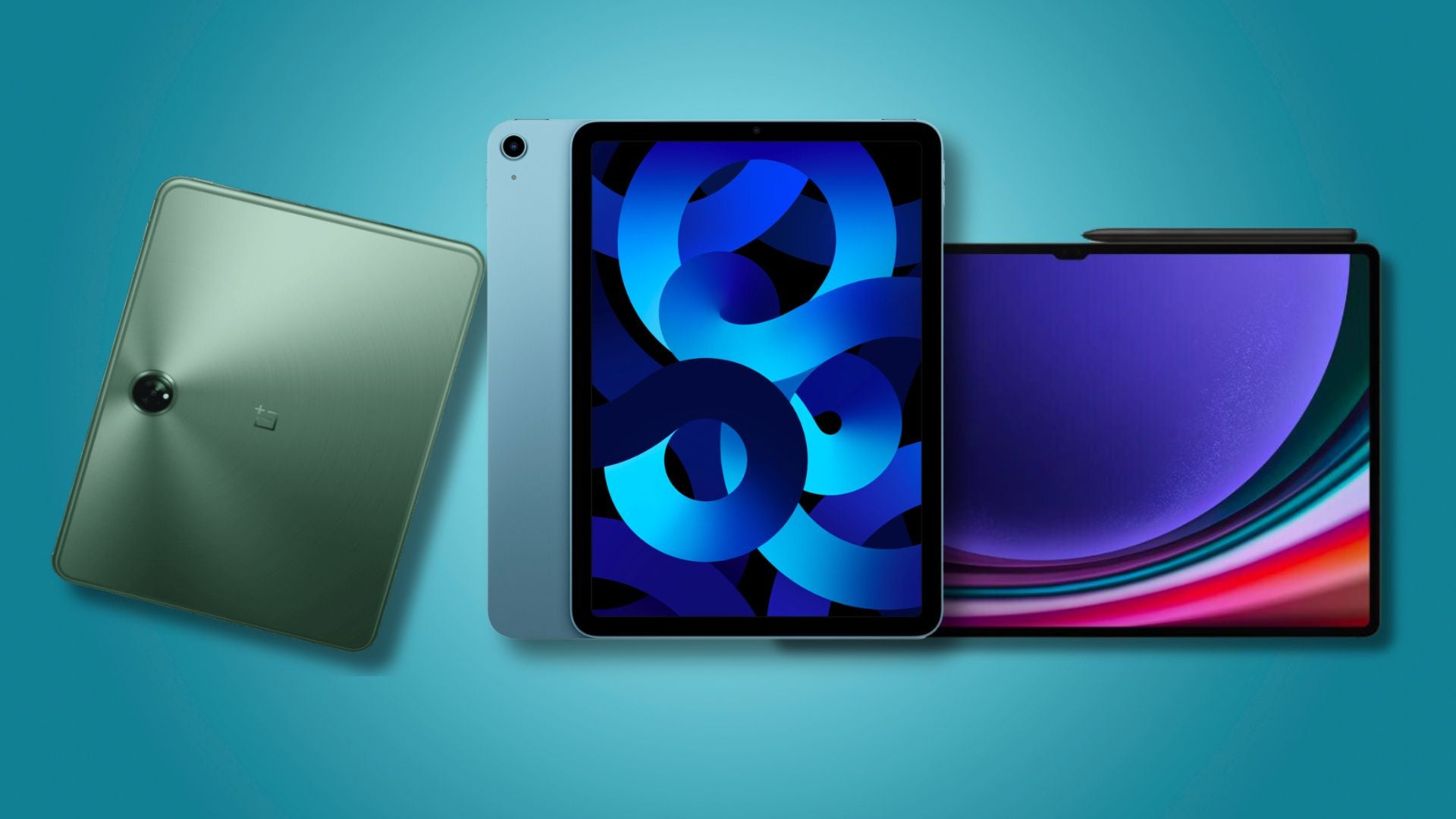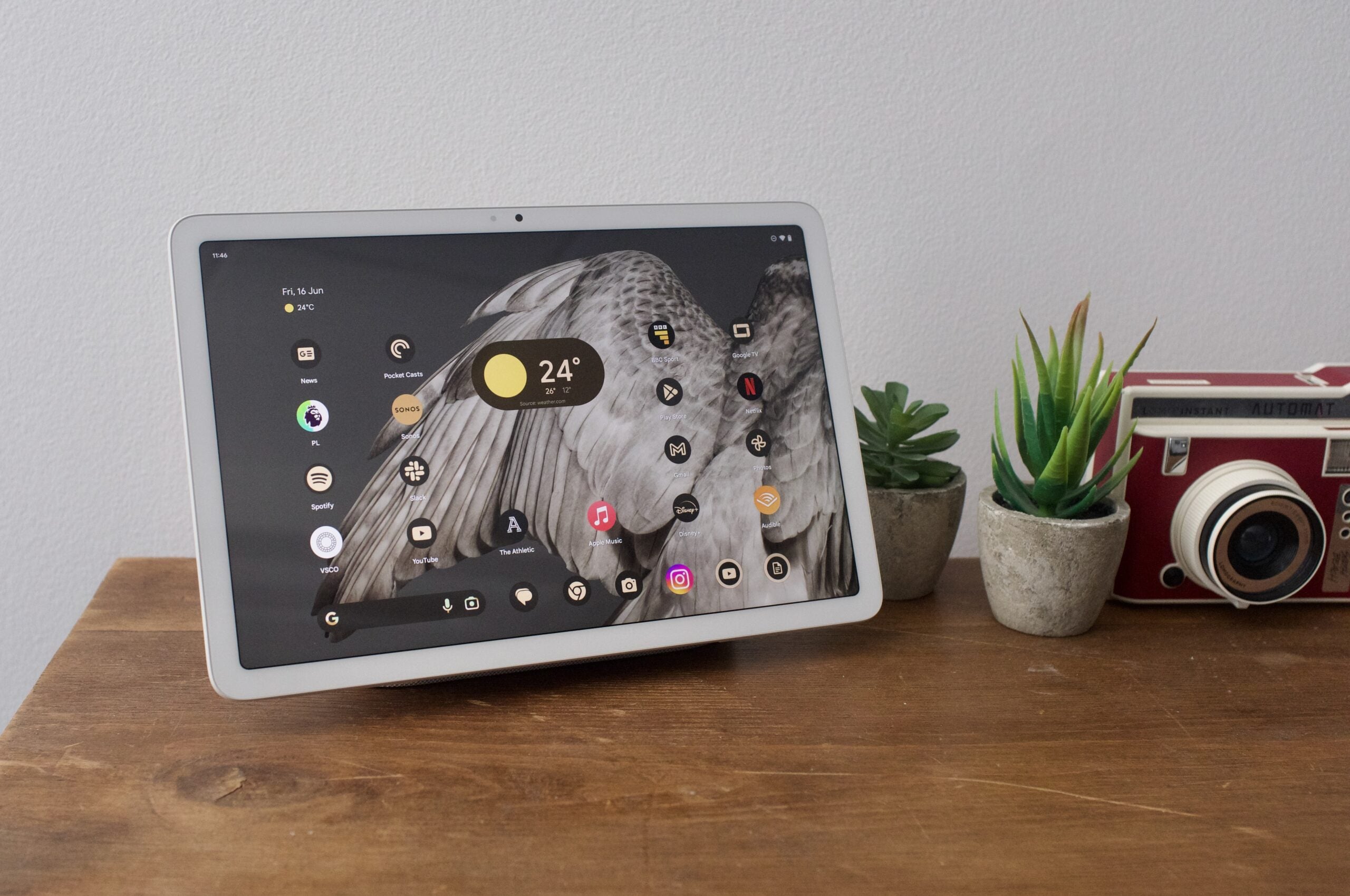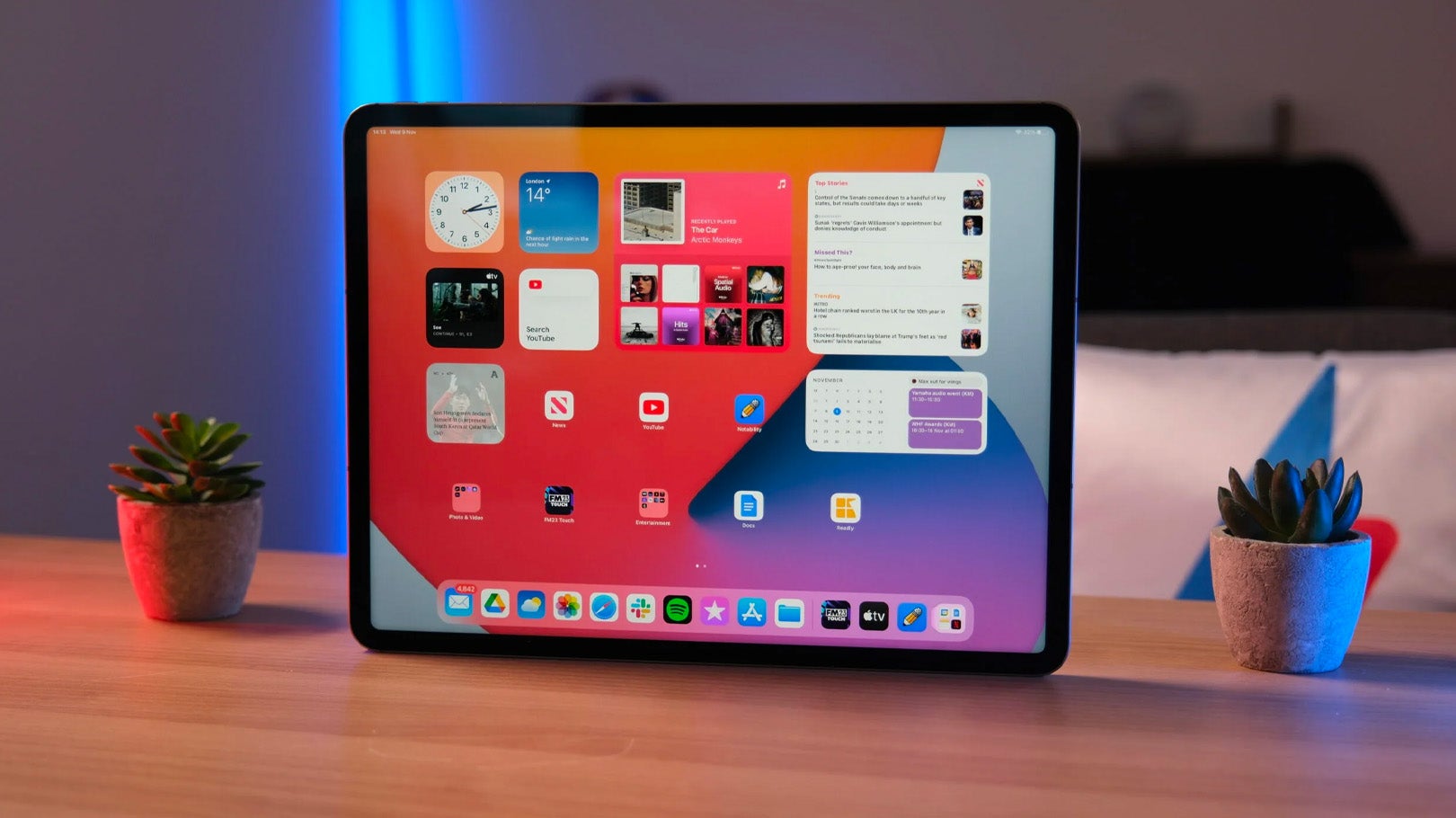Xiaomi Pad 5 Review
An impressive device, ticking all the right boxes for basic productivity and entertainment use
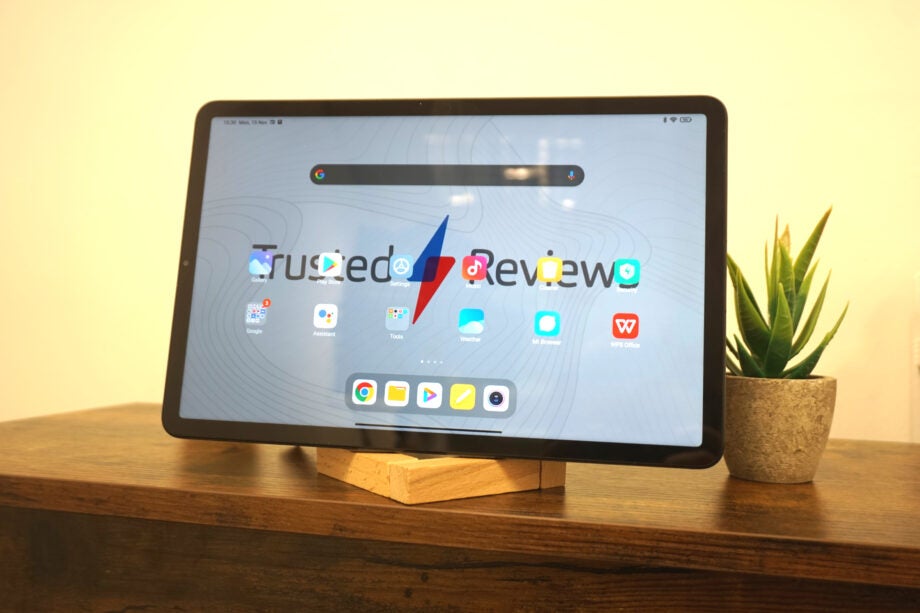

Verdict
The Xiaomi Pad 5 is the latest Android tablet hoping to dethrone the iPad Air 4 as the Trusted Recommended tablet for most people. From a hardware perspective it’s an impressive device, ticking all the right boxes for basic productivity and entertainment use. And if you want a tablet for Netflix, web browsing and Game Pass, but don’t fancy an iPad, then you’ll struggle to do better than the Pad 5 at the moment. The only real downside is that ongoing optimisation issues around Android on a tablet stop it from fully delivering on its hardware’s promise.
Pros
- Excellent screen that’s ideal for Neflix and gaming
- Decent every day performance
- Good build quality
- Powerful speaker setup
Cons
- Software features some bloatware
- Demanding tasks heavily impact battery
Availability
- UKRRP: £319
- USARRP: $329
- EuropeRRP: €349
Key Features
- 11-inch, 120Hz, Dolby Vision ready screenThe 11-inch screen features a high 120Hz refresh rate and supports the Dolby Vision HDR standard
- Quad speaker with Dolby Atmos supportThe Pad 5 has 4 speakers around its sides that support Dolby’s virtual surround sound tech
- Android 11 softwareThe tablet runs a customised version of Google’s mobile operating system
- 8720 mAh batteryBattery life depends heavily on how you use the tablet.
Introduction
The Xiaomi Pad 5 is an Android tablet aimed squarely at the same market as the ruling iPad Air 4 and iPad 9, which are Trusted Reviews recommended slates for most buyers.
It doesn’t have the lofty goals of replacing a laptop, instead it’s being marketed as a device for people that want a tablet to watch Netflix and manage their day-to-day life on.
This may sound a little dull and similar to the Galaxy Tab S7 FE and Lenovo Yoga Tab 13 (2021) I tested earlier this year. But after a fortnight with the tablet I can confirm it is a very competent device and one of the best all round Android tablets to arrive this year.
Highlights include a super smooth, gaming ready 120Hz screen, powerful performance and long battery life.
The only real downside is that, like every tablet that isn’t an iPad, the Xiaomi Pad 5’s software isn’t as optimised as I’d like for the device’s form factor.
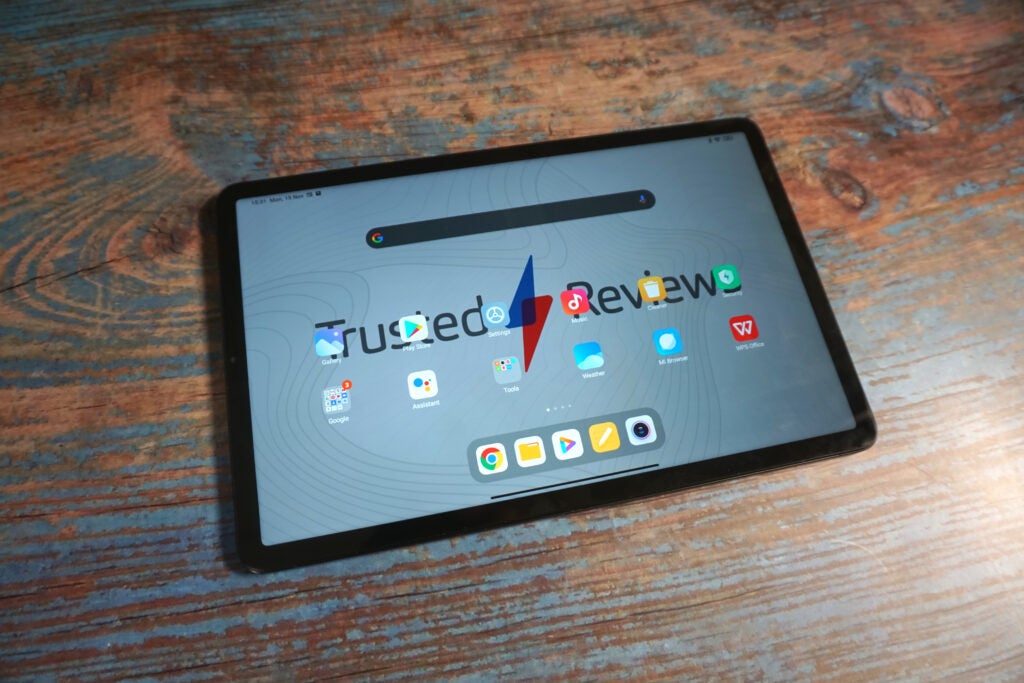
Design and screen
- The Xiaomi Mi Pad 5 features a very iPad-like design
- It supports an optional keyboard cover and stylus add ons
- The 11-inch 120Hz screen is great for movie watching and gaming
The Xiaomi Pad 5 has about as standard a design as you’ll find on a tablet.
It’s a rectangular slate with metal sides and a glass front and back. If you asked most people to draw a generic tablet, the end result would look a lot like the Pad 5.
The design is also completely free of design flourishes, with the only noticeable elements being the Xiaomi logo and slightly raised camera housing on the Pad 5’s back. The latter houses a single 13MP sensor, which I’d recommend only using if absolutely necessary. Trust me, the camera on your phone is almost certainly going to produce better results.
This may sound boring, especially compared to things like the Yoga Pad 13, which has a custom speaker cylinder and rear kickstand, but I’m quite fond of the Pad 5’s unassuming design.
The tablet doesn’t have a formal IP water resistance rating, which is rarely standard on tablets, but I’ve been impressed with its build quality during testing.
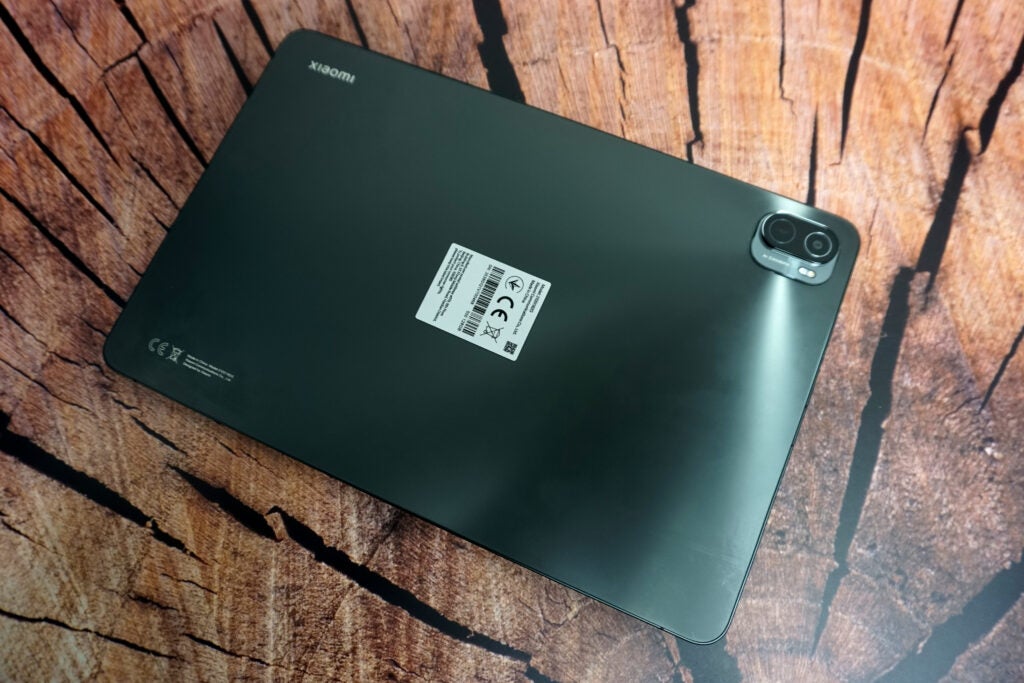
The back offers next to no flex when pressed and, though it is prone to picking up fingerprint marks and smudges fairly fast, is suitably scratch resistant to survive being carried in a satchel without a case. I lugged it to and from work with my laptop in the same bag and didn’t have any issues over the past week.
For those that want to add an extra layer of protection, Xiaomi sells an optional keyboard cover. This attaches magnetically to a dock on its bottom long side. Xiaomi didn’t provide a cover with my review sample, but the docking and functionality look very similar to what you’ll get on the base iPad 9 or competing Galaxy Tab S7 Plus/FE.
There’s active stylus support, though, like the case, Xiaomi didn’t send one for testing with the tablet. I’ll update this review if I get a chance to test the peripherals with the Pad 5 at a later date.
Outside of this the device ticks all the boxes you’d expect. The tablet has a USB-C charge port on its bottom short side, a power key on its top right side and a volume rocker on its long right hand side. Outside of that 4 Dolby Atmos ready speakers line its short sides.
Like many modern tablets the Xiaomi Pad doesn’t feature a microSD card input, meaning you’ll be stuck with either 128GB or 256GB depending on which model you opt for.
The screen isn’t OLED, but at this price that’s not surprising, and during testing I was surprised how well it performed.
Even in its out of the box “vivid” setting, which claims to adjust the screen settings depending on what process is running, the screen looks good to the naked eye. Colours aren’t oversaturated and, despite not being an OLED, blacks look suitably deep to offer decent contrast while watching movies.
The immersive image is aided by the tablet’s Dolby Atmos-certified quad speaker system. Though it isn’t quite as loud as the system I tested earlier this year on the Yoga Tab 13, the speakers are a clear step up on cheaper tablets, like the Galaxy Tab S7 FE, offering suitable power and detail to happily binge movies on. I’m also pleased to report I didn’t detect any sibilance or distortion even when running the speakers at maximum volume.
Max brightness levels are solid, with the tablet screen remaining legible in everything but direct, very bright sunlight. Viewing angles are wide enough for two people to comfortably watch movies together, though the lack of a stand is a pain in this instance. The 1600 x 2560 resolution ensures content uniformly looks sharp and you’ll struggle to spot individual pixels using the Pad 5. All in all, this is an excellent display.
Cracking out my colourimeter, my naked eye impressions rang true. During technical testing I detected a 0.36 nit black level, which is very good for a non OLED screen and just above the 0.0 perfect black ideal. The 484.9 nit max brightness I recorded is slightly below Xiaomi’s quoted 500 nits, but it still adds up to give the screen a solid 1337:1 contrast ratio.
These figures match some of the more expensive tablets I’ve tested, like the Lenovo Yoga Tab 13 and make the Xiaomi Pad 5 a great option for anyone who wants a tablet primarily for streaming video.
Colour accuracy is solid. In the tablet’s out of the box settings, I detected a 6870k colour temperature, which is suitably close to the 6500k ideal, and means the colours are only slightly cool. The tablet also has calibration options in its settings which lets you tweak the temperature to your liking.
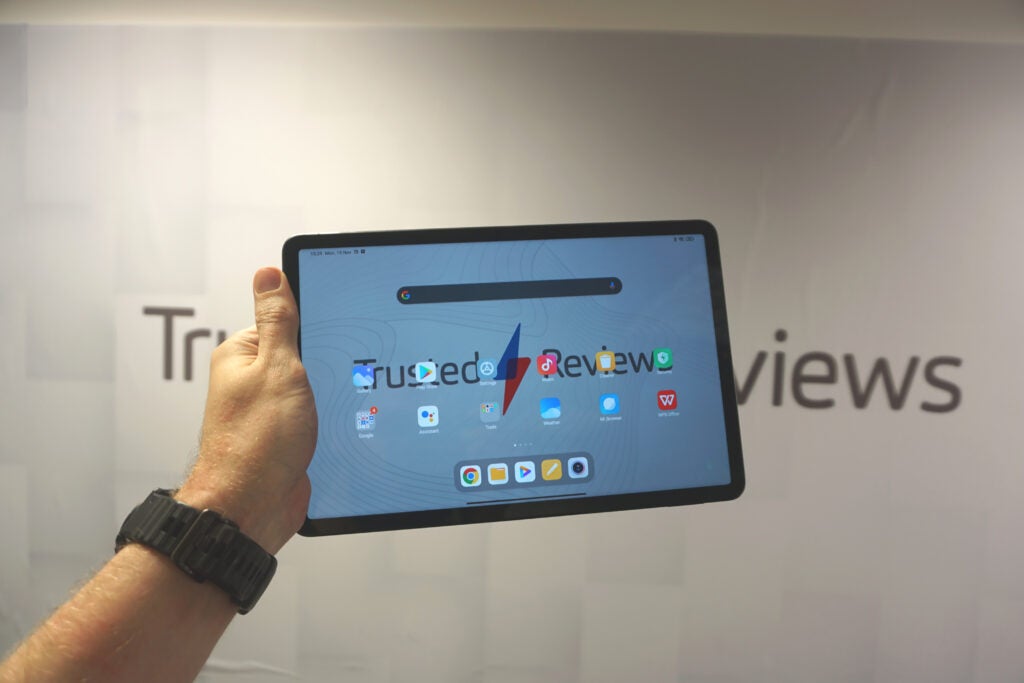
The tablet covered 99.2% of the sRGB gamut, which is the most commonly used gamut. It covered 82.5% of the Adobe RGB and 93.6% of the DCI P3 gamuts, which are favoured by creatives and cinematographers. Most of the tablets I test this price cover 70% of the creative gamuts, at best, so these scores are impressive.
Gamers will also be happy that it has a 120Hz max refresh rate. This is a metric that informs how many images per second a screen renders. Until a couple of years ago, when Apple introduced ProMotion to its iPad Pro range, most tablet screens were locked to run at 60Hz. A higher refresh rate brings a number of benefits including smoother navigation and more responsive gaming. The latter is the result of there being less of a delay between each new frame when running games.
The only downside is that, unlike Apple Promotion screens, the Xiaomi Pad 5’s display doesn’t offer a variable refresh rate. This is a clever bit of tech that lets screens change their refresh rate depending on what process is running. This lets them ramp up to 120Hz when there’s a benefit, like gaming, and drop to lower rates when there’s not to conserve battery.
Performance
- The tablet is powerful enough for most tasks
- But its software takes some getting used to
The Xiaomi Pad 5 is powered by a Qualcomm Snapdragon 860 CPU that’s backed up by 6GB RAM.
These specs are pretty bog-standard for a tablet at this price. The silicon was originally released in 2019. This means it’s not the most powerful you’ll find on the market, falling behind the new Qualcomm Snapdragon 888 and Apple’s A15 Bionic. As a result, you shouldn’t expect iPad Pro-level performance.
I found the Pad 5 still offered solid performance with day-to-day use, however. The tablet’s smooth to use, and opens apps with no noticeable delays. Streaming HDR video via Wi-Fi ran smoothly and I never had any issue playing games on GeForce Now and Xbox Game Pass.
The only real annoyances I suffered doing basic tasks stemmed from the tablet’s software. The Pad 5 runs using a heavily customised version of Android 11. For the most part it’s not bad, the changes tend to be minor UX design changes and custom app icons.
But out of the box, like Samsung devices, it tries to push Xiaomi’s services a little bit too hard. The initial shortcut to the video app takes you to the Xiaomi store, not the Play Store. The same is true for files, calendar and pretty much everything else. This is easily fixed, but it’s an annoyance nonetheless.
I’m also still not convinced about Android on tablets in general. The OS and its apps are all optimised for phone-sized devices and its creative offering doesn’t come close to matching what you’ll get on iPad OS, which has cool services like Affinity Photo and Designer. Hopefully this will be fixed when Google’s tablet focussed Android 12L software gets rolled out to general consumers.
If you want to do creative work on the Pad 5 and don’t mind the limited app offering be warned: I had some issues when I tried to do more hardcore digital creative work on it. Loading Krita and creating a large scale, multi-layer digital project the device ran, but it did on occasion chug, with there being a minor, but frequent delay between me enacting a command and it being rendered on screen. At this price that’s hardly surprising, however.
Running the device through Trusted Labs’ standard suite of synthetic benchmarks, my real world findings rang true. Synthetic benchmarks are tests that aim to gauge a device’s performance in specific areas. The Geekbench test gauges a device’s CPU performance, while 3DMark checks how good it is for gaming. You can see how the Xiaomi Pad 5 performed in the table below.
| Geekbench single-core | 753 |
| Geekbench multi-core | 2808 |
| 3DMark Wild Life | 3410 |
Battery Life
- Battery life varies heavily depending on what you’re doing
- But most users should get a week’s use out of it
Battery life is one of the most important areas a tablet really needs to deliver on. As a rule, I’d expect any tablet this size to survive a long haul flight to the US (from London), off a single charge. This means it should generally be able to run for at least 10 hours.
The Xiaomi Pad 5 can achieve this milestone, but how long it lasts will be heavily informed by what settings you have active and how you use it.
Testing the tablet with its 120Hz screen mode and auto brightness settings active, the tablet generally made it past 10 hours with lightweight use, but wasn’t quite as capable of running demanding tasks. Streaming 1080p video on Wi-Fi with these settings active, the 8720 mAh battery shed an average of 9-11% of its charge per hour, which is slightly lower than what I’d expect from an 11-inch tablet.
Gaming puts an even bigger drain on the battery. Streaming games over GeForce Now the tablet discharged an average of 22-25% of its battery. Taking things offline and playing games from the Play Store the tablet performed slightly better shedding an average of 18-20% per hour. This means you’re not going to want to rely on it as a mobile games station when travelling long distances.
These figures radically improve if you drop the screen refresh rate to 60Hz. Here video playback went down to 7-9% per hour and gaming to around 18%. The only problem is, once you’ve experienced 120Hz, dropping to 60Hz feels like a big downgrade for everything other than video playback.
Latest deals
Should you buy it?
You should buy the Xiaomi Pad 5 if you want a reliable all-round tablet: The Mi Pad 5 doesn’t excel in one area, or have any fancy gimmicks to get excited about, but it gets all the basics right, offering reliable performance, solid screen quality and robust build quality.
You shouldn’t buy the Xiaomi Pad 5 if you want a tablet for creative work: Though it has a great screen, the Xiaomi Pad 5’s performance isn’t quite fast enough for large scale digital painting, or design work.
Final Thoughts
The Xiaomi Pad 5 is one of the best all-round Android tablets on the market and a good choice for most buyers who actively don’t want an iPad. Costing roughly as much as the iPad 9, the device offers users an excellent screen, reliable performance for casual use and solid build quality. The only downsides are that its Android-based software still doesn’t feel as refined as Apple’s iPad OS and that its battery life could be slightly longer when running certain tasks.
How we test
We test every tablet we review thoroughly. We use industry standard tests to compare features properly and we use the phone as our main device over the review period. We’ll always tell you what we find and we never, ever, accept money to review a product.
Used as our main tablet
Screen tested with coloromiter
Battery tested with real world use and synthetic benchmarks
FAQs
The Xiaomi Pad 5 does not have a variable refresh rate. It can be locked to run at either 60Hz or 120Hz.
The Xiaomi Pad 5 does not come bundled with a keyboard cover. You can buy one as an add-on at the Xiaomi Store.
The Xiaomi Pad 5 doesn’t feature 5G or LTE connectivity.

